BETTER TOUCH BETTER BUSINESS
Contact Sales at KAIDI.
The antenna of the radar water gauge emits a very narrow microwave pulse. This pulse propagates in space at the speed of light and meets the surface of the measured medium. Part of its energy is reflected back and received by the same antenna. The time interval between the transmitted pulse and the received pulse is proportional to the distance from the antenna to the surface of the measured medium. Due to the extremely high propagation speed of electromagnetic waves, the time interval between the transmitted pulse and the received pulse is very small (nanosecond order) and it is difficult to confirm. The high-frequency radar water level gauge adopts a special demodulation technology, which can accurately identify the transmitted pulse and the received pulse. The distance between the antenna and the surface of the measured medium can be further calculated.
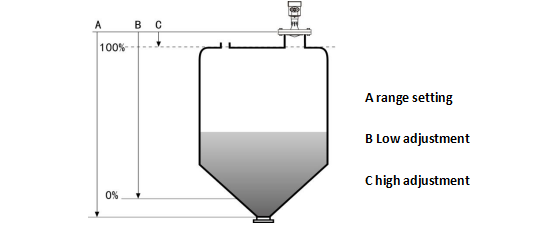
The reference surface for measurement is: the bottom surface of the thread or the sealing surface of the flange
Note: When using radar water level timing, be sure to ensure that the highest water level cannot enter the measurement blind zone.
The radar water level gauge recommended by the industry uses a 26GHz transmission frequency, so it has:
▲Small beam angle, concentrated energy, stronger anti-interference ability, greatly improved measurement accuracy and reliability
▲The antenna size is small, easy to install and add dust cover and other antenna protection devices
▲Lighter about 1KG, easy to install
▲The measurement range is up to 30 meters, covering large-scale reservoirs and other water level measurement
▲Multiple output circuit interfaces to cooperate with the acquisition system
▲Using pulse working mode, the transmitting power of the radar water level gauge is extremely low, and there is no harm to the human body and the environment
●908S
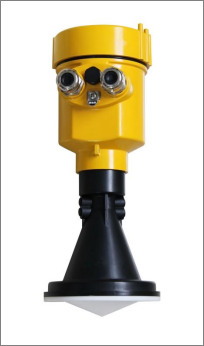
Application: rivers, lakes, shallows
Measuring range: 0~30 meters
Process connection: gantry frame,Locking flange from DN 80/ 3"
Process temperature: -40~80℃
Process pressure: (-0.1~0.3) MPa
Precision: ±3mm
Frequency: 26GHz
Protection grade: IP67 / IP65
Power supply: DC (6-24V) / four wires; DC 24V / two wires
Signal output: Modbus-RS485 protocol (6~24V DC);4~20mA/Hart two wires (24V DC)
On-site display: optional
Shell: cast aluminum / plastic
l Preparation before installation:
Ø Please pay attention to the following matters, to ensure that the instrument can be installed correctly:
Ø Please reserve enough space for installation.
Ø Please avoid installing occasions strong vibration.
l Illustration and installation position
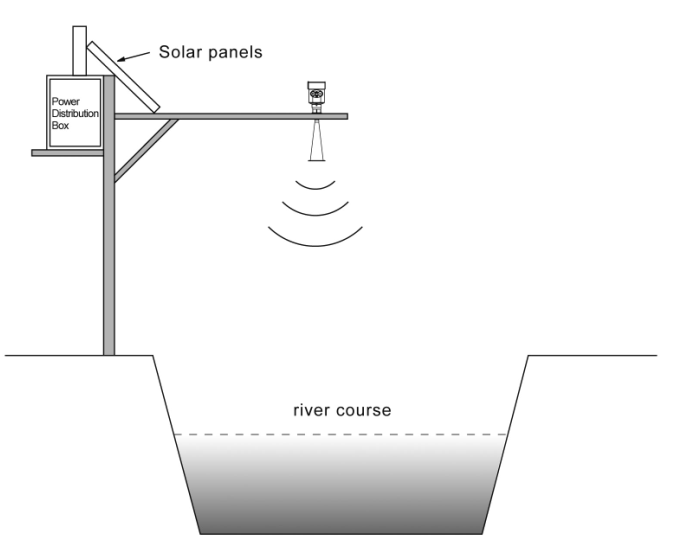
Schematic diagram of radar and stent (1)
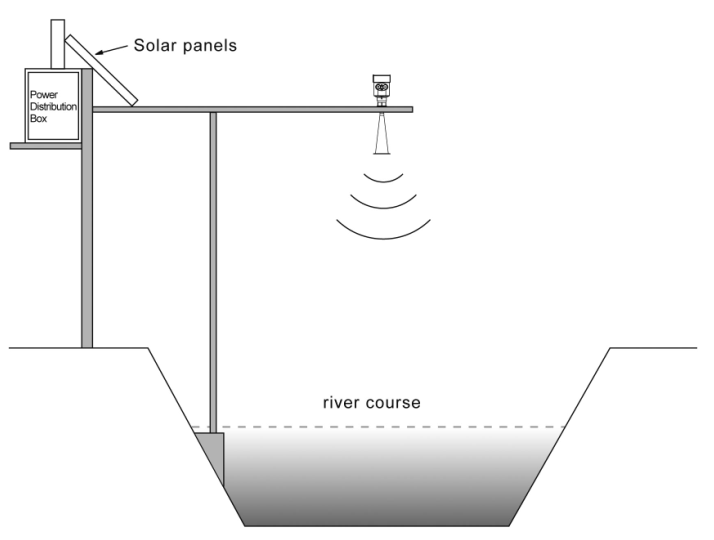
Schematic diagram of radar and stent (2)
Note: Radar antenna microwave pulse, have a certain emission angle. From the lower end of the antenna to be measured between the surface of the medium, and a transmitter shall be no obstruction in the region of the microwave beam radiation. Therefore, the installation should be avoided as far as possible shelter facilities, shall be carried out "false echo study" when necessary. Also note that when installing devices: the highest level measured shall enter blind; instrument must be connected to the earth, increasing the lightning protection measures; outdoor shade should be taken, rain measures.
Power Supply Voltage
| RS485/Modbus | power supply and Modbus signal lines separated respectively using a shielded cable, the power supply voltage range of see technical data. |
| (4~20)mA/HART (Two wire system) | The power supply and the output current signal sharing a two core shield cable. The supply voltage range see technical data. For intrinsically safe type must be a safety barrier between the power supply and the instrument. |
Connection mode
l The RS485/Modbus wiring diagram as follows:
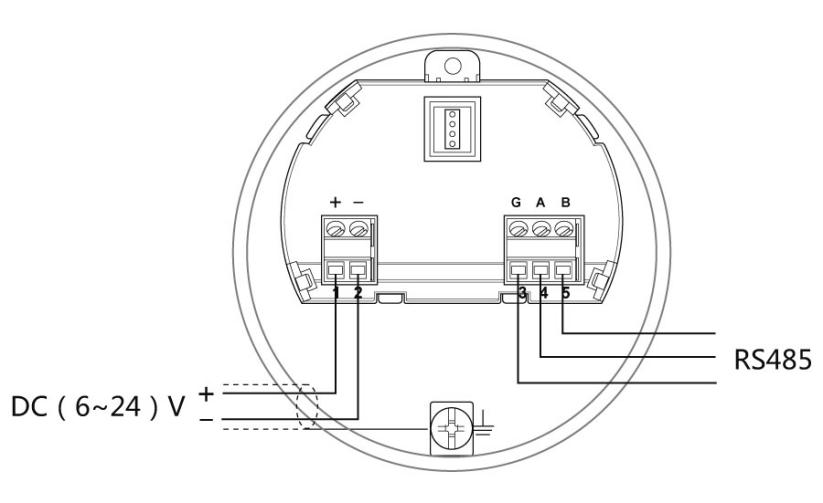
l 24V two wire wiring diagram as follows:
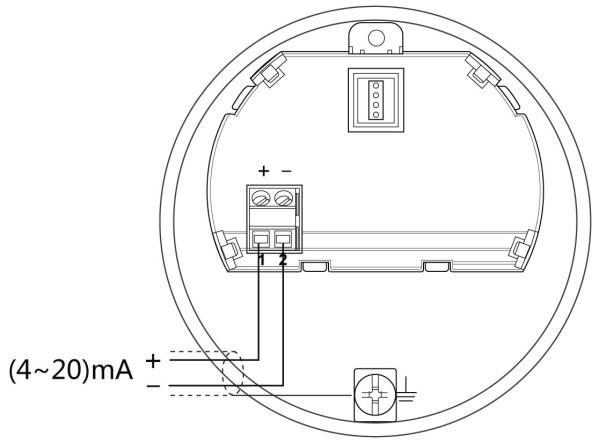
Safety instructions
Please comply with the requirements of local electrical installation regulations!
Please abide by the local regulations on personnel health and safety. All operations on the electrical components of the instrument must be completed by properly trained professionals.
Please check the nameplate of the meter to ensure that the product specifications meet your requirements. Please make sure that the power supply voltage is consistent with the requirements on the nameplate of the meter.
Protection grade
This instrument meets the protection grade IP66/67 requirements, please ensure the waterproof cable sealing head.
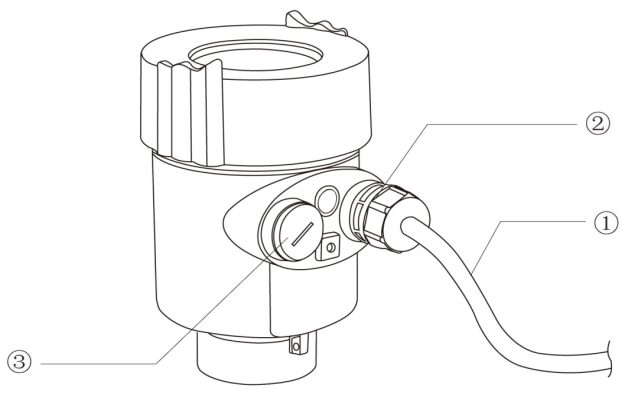
How to install to meet the requirements of IP67:
Please make sure that the sealing head is not damaged.
Please make sure that the cable is not damaged.
Please make sure that the cable for use with electrical connection specification.
Cable into the electrical interface before its curved downward, ensure that the water will not flow into the shell, see the①
Tighten the cable seal head, see the②
Please electrical interface will not use blind plug tight, see the③
l There are three kinds of debugging method:
1) Display / Keyboard
2) Host debugging
l Display / Keyboard:
Please debug the instrumentation by four buttons on the display screen. There are three debug menu languages optional. After debugging is generally used only for display, through the glass window can read measured value very clearly.
Display / Keyboard
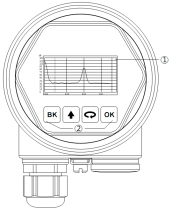
① Liquid crystal display(LCD)
② The key
l PC debugging:
Connected to PC by HART
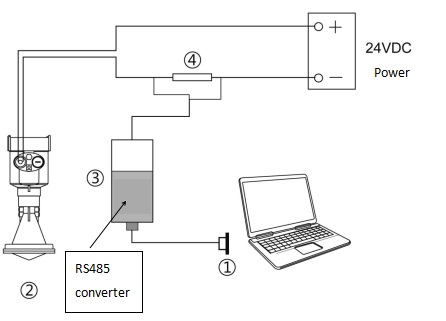
① RS232 interface or USB interface
② Radar level meter
③ HART adapter
④ 250 Ω resistor
●Connect to the host computer through the RS485 converter
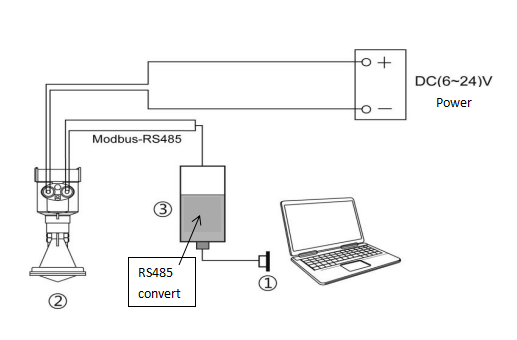
① RS232 interface/or USB interface
② Radar water level gauge
③ RS485 converter
●Case size:
➪Cast aluminum case
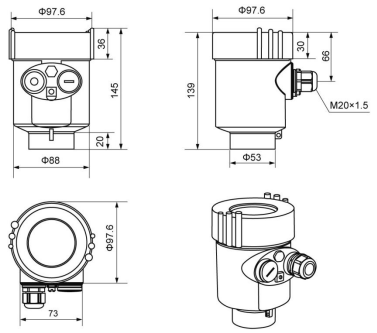
➪Plastic case
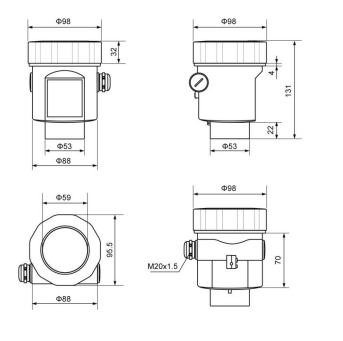
● Product Size
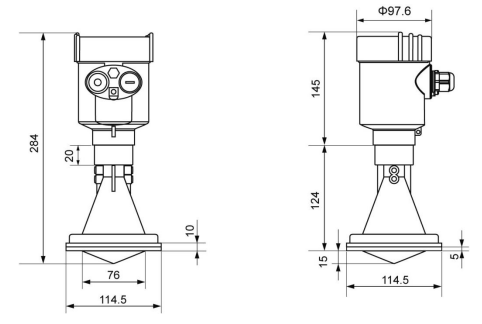
● If there is a split display, the size of the water conservancy split display:
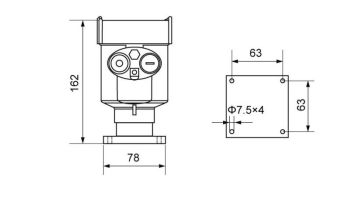
● Gantry frame size
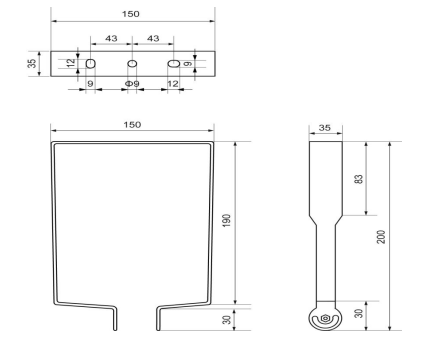
| shell material | Cast aluminum, plastic, stainless steel |
| Seal between housing and housing cover | Silicone Rubber |
| Shell window | Polycarbonate |
| Ground terminal | Stainless steel |
| Supply voltage | Four-wire system (6~24) V DC / Modbus-RS485 / power consumption 90mW Two-wire system DC 24V / 4~20mA / power consumption 0.75W Allowable ripple-<100Hz Uss<lV;-(100~100K) Hz Uss<l0mV |
| Cable parameters | Cable entry/plug M20×l.5 cable entry Connection terminal wire cross section 1.0mm² |
| Output parameters | |
| output signal | Modbus-RS485 / 4~20mA |
| Protocol | Modbus / Hart |
| Resolution | 1. 6u A |
| Fault signal | The current output is unchanged; 20. 5mA 22mA; 3.9mA |
| Integration time | (0~36)s, adjustable |
| Blind spot | Antenna end |
| Maximum measuring distance | 30 meters |
| Microwave frequency | 26GHz |
| Measurement interval | About 1 second (depending on parameter settings) |
| Adjust the time | About 1 second (depending on parameter settings) |
| Display resolution | 1mm |
| Working storage and transportation temperature | (-40~80) ℃ |
| Process temperature (the temperature of the antenna part) | (-40~80)℃ |
| Pressure | Normal pressure |
| Shockproof | Vibration frequency (10~150) Hz, maximum vibration acceleration l0m/s² |
The launch angle depends on the antenna size
-¢76mm 12°
Accuracy see the figure below
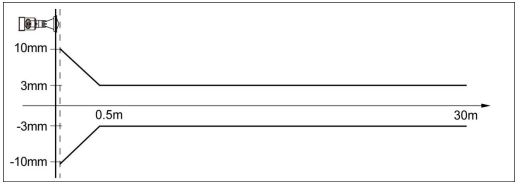
| License | P standard (non-explosion-proof) |
| Process connection/material | N gantry frame M PP flange installation Y special customization |
| Antenna type/material | A Horn antenna Φ76mm/PP Y special customization |
| Seal / process temperature | V Ordinary seal/(-40~80) ℃ |
| Electronic unit | V RS485-Modbus / four-wire system W (4~20) mA / 24V DC two-wire system |
| Shell/Protection level | L aluminum/IP67 G plastic /IP65 |
| Cable entry | M M20 x l. 5 N ½″ NPT |
| On-site display/programming | A with X without |
We are here to help you! If you close the chatbox, you will automatically receive a response from us via email. Please be sure to leave your contact details so that we can better assist